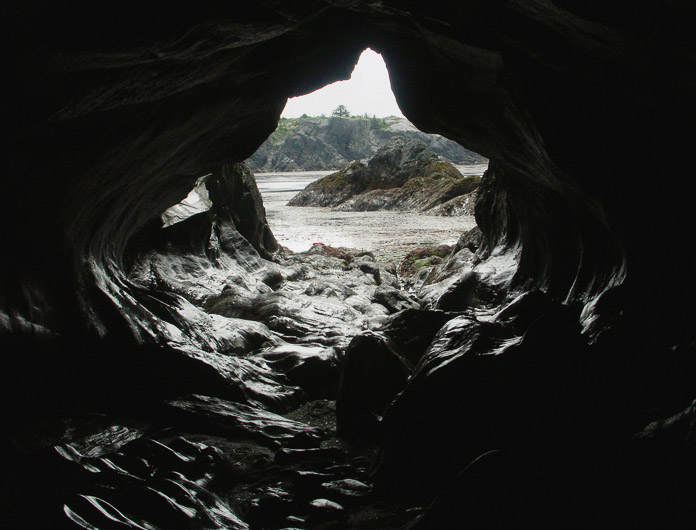
海蚀洞和海蚀穹——这都和岩石有关。坚硬的花岗质岩石风化得均匀,这使得海蚀洞和海蚀穹很稀有。但是层状变质岩,它们有可能发展成海蚀洞和海蚀穹。这些层次有不同的硬度和剪切强度。海水的冲击侵蚀着较软的区域。有时候,岩石类型,岸线地形以及持续的海洋状况结合在一起会产生奇异的海蚀洞和海蚀穹。但是通常海蚀穹不能维持很久——创造它们的侵蚀作用同样也会将其损毁。
Cuevas y arcos marinos – todo es debido a las rocas. Las rocas duras de granito se erosionan de manera uniforme, haciendo que las cuevas y los arcos marinos sean algo raro. Pero las rocas metamórficas estratificadas tienen potencial para dar lugar a arcos y cuevas. Sus estratos, tienen diferentes grados de dureza y cizallamiento. El agua del mar golpea y corroe las zonas más blandas. En ocasiones, el tipo de roca, la configuración de la costa y las constantes condiciones del mar, se combinan para crear una fantástica cueva o arco. Pero por lo general, los arcos de mar no perduran mucho tiempo - el mismo proceso de erosión que los crea, también los destruye.
Sea caves and sea arches – it's all about the rock. Hard granitic rock weathers uniformly, making sea arches and sea caves rare. But layered metamorphic rocks, now there's potential for arches and caves. The layers have different degrees of hardness and shear. Sea water pounds and eats away the softer areas. Occasionally the rock type, the coastline configuration and persistent sea conditions combine to produce a fantastic cave or arch. But sea arches don't usually last long – the same erosion processes that creates them also tears them down. Photographer: Bill Eichenlaub